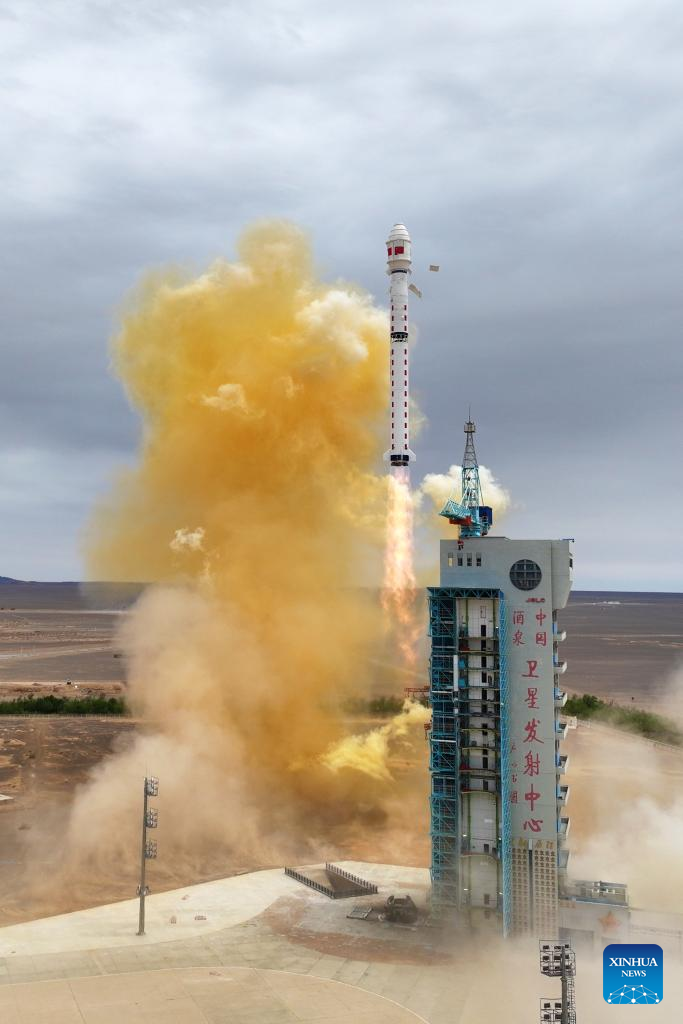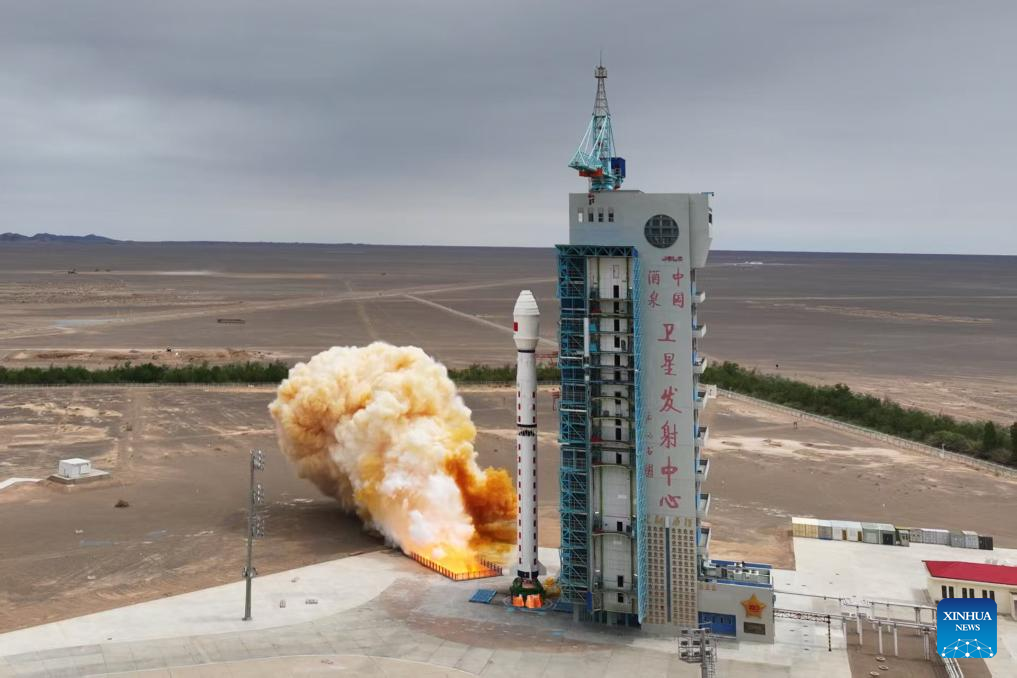
JIUQUAN - China launched an electromagnetic monitoring satellite on Saturday, which is expected to enhance the country's "space-air-ground" integrated monitoring capabilities for major natural disasters.
A Long March-2D carrier rocket lifted off from the Jiuquan Satellite Launch Center in northwest China at 3:56 pm (Beijing Time), successfully sending the Zhangheng 1-02 satellite into its planned orbit, according to the China National Space Administration (CNSA).
The CNSA said that this marks a significant step forward for China in the field of space-based observation of the Earth's physical fields.
READ MORE: China's 33rd rocket launch in '25 puts new satellite into orbit
Named after the ancient Chinese inventor Zhang Heng, who created the world's first seismoscope over 1,800 years ago, the satellite was jointly developed by China and Italy. It is the first operational satellite dedicated to exploring the Earth's physical fields under China's medium and long-term civil space infrastructure development plan, according to the CNSA.
With a designed lifespan of six years, the satellite is equipped with nine payloads, including an electric field detector co-developed by China and Italy, as well as a high-energy particle detector developed by Italy.
READ MORE: China launches space computing satellite constellation
It will carry out quasi-real-time monitoring of global electromagnetic fields, electromagnetic waves, the ionosphere and the neutral atmosphere, detecting electromagnetic anomalies caused by geological and human activities, as well as monitoring thunderstorm and lightning activity, according to CNSA.
"Scientists will use these data to study the correlation between changes in the Earth's physical fields and geological activities, and to support research on the prediction of earthquakes, tsunamis, volcanic eruptions, extreme weather, and space weather disasters," said Peng Wei, deputy director of the system engineering department of the CNSA.

The satellite will significantly enhance China's early perception, risk assessment, and monitoring and early warning capabilities for major natural disasters, Peng added.
It will also provide data support for emergency management, resource mapping, and communications and navigation industries, while fostering scientific and technological cooperation in related fields among countries and regions along the Belt and Road.
The Zhangheng 1-01 satellite, launched in 2018, remains in normal operation, while the new satellite has richer physical measurements. Working in tandem, the two satellites will conduct collaborative observations, effectively improving the horizontal spatial and temporal resolution of observations, according to Peng.
China and Italy have further deepened practical cooperation in satellite payload development, data sharing, and scientific research, said Peng.
"The successful launch of this satellite marks another milestone in Sino-Italian aerospace collaboration, demonstrating closer scientific cooperation and exchanges between the two sides. It will also contribute to the well-being of the human community with a shared future," he added.
READ MORE: China launches new communication technology test satellite
Francesco Longo, deputy director of engineering and technology of the Italian Space Agency, called the mission an important milestone. "We have a lot of expectations on the results that we acquire from this important Chinese-Italian mission."
He noted that, like China, Italy is a beautiful yet fragile country, prone to volcanoes, earthquakes and other events that can affect people's lives. This mission, he said, will contribute to protecting and improving lives impacted by natural disasters.
Longo also noted that adding this new satellite to the first, and eventually building a constellation, will double observation time, significantly boosting scientific prospects.
The Italian team named the project Limadou, the pinyin transliteration of the Chinese name for the 16th-century Italian priest Matteo Ricci, in honor of his pivotal contributions to cultural exchanges between the East and the West.
Both Marco Polo and Matteo Ricci served as bridges between Italian and Chinese cultures, and space, too, has the potential to unite all countries, Longo said.
Saturday's launch marked the 581st mission of China's Long March rocket series.


